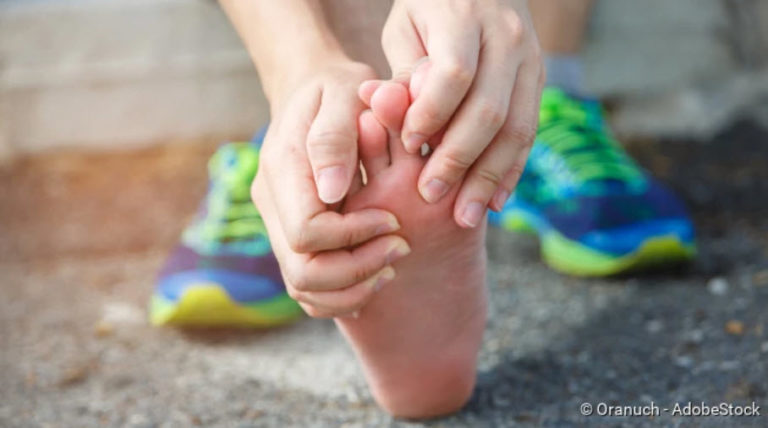Male Yeast Infection: symptoms, infection, treatment
Male yeast infection (Candida balanitis) is a fungal infection of the male in the area of the glans (Source). It is sometimes also incorrectly called “vaginal mycosis in men” (Source), because in both cases – vaginal and penis mycosis – the same fungal types cause the infection (Source). Male yeast infection is very unpleasant, but with consistent therapy (Source), it usually heals completely within a few days (Source).
Read here all important information about symptoms, causes, diagnosis, treatment and prognosis of male yeast infection.
ICD code for this condition is B37.

Symptoms Of Male Yeast Infection
Male yeast infection causes similar symptoms to vaginal mycosis: It initially manifests itself by a reddening of the foreskin and the glans. The inner parts of the foreskin are often swollen. Within a few days, itching, burning and even pain occurs. Pain is particularly frequent during sexual intercourse or when urinating.
In addition, small blisters can form on the glans. Fluid accumulates in these. If the blisters burst open, the penis wets. Another sign of male yeast infection is whitish to greyish deposits under the foreskin.
Note: If the fungal inflammation is limited to the glans, it is called candida balanitis. In uncircumcised men, the foreskin is usually also inflamed. Then it is a fungal balanoposthitis.
Causes Of Male Yeast Infection
The triggers of male yeast infection are yeast fungi. Most often the yeast fungus Candida albicans is responsible for the infection – just like the female vaginal fungus. More rarely, other yeast fungi are behind it (like Candida glabrata).
Mostly yeast fungi are transmitted during sexual intercourse. It is also possible that infection can occur through contaminated objects, for example when affected men and healthy people share towels and bed linen.
Risk factors for male yeast infection
The penis has a natural skin flora that is composed of different types of bacteria and other microorganisms. These create an environment in which other disease-causing germs normally cannot multiply well. In a healthy penis flora, male yeast infection is therefore very rare. It develops mainly when the skin flora of the penis is disturbed.
One of the main factors favouring a fungal infection is a weakened immune system. This can be the result of diseases such as HIV or AIDS or diabetes mellitus. In addition, a weakened immune system can also be caused by certain drugs such as cortisone or cancer drugs from the group of cytostatic drugs (chemotherapeutic drugs).
Antibiotics can also promote male yeast infection: These drugs generally have an inhibitory or killing effect on bacteria – including the beneficial bacteria of the skin flora in the genital area. Antibiotic therapy can, therefore, disrupt the balance of the natural skin flora and thus pave the way for male yeast infection.
Excessive or inadequate genital hygiene is also considered a risk factor: Excessive hygiene disturbs the natural skin flora so that disease-causing germs (such as yeast fungi) can spread more easily. Lack of genital hygiene is equally unfavourable: The sebaceous glands under the foreskin of the penis form a yellowish-white secretion called smegma. If it is not removed regularly, it becomes a breeding ground for pathogens such as yeast fungus – so infections such as male yeast infection can quickly develop.
In this context, especially boys or men with a narrowed foreskin (phimosis) are susceptible to male yeast infection: Because of the narrowed foreskin, smegma often cannot be removed as thoroughly as it should be.
Another risk factor for the development of male yeast infection is frequent sexual intercourse. Those who have frequent unprotected sexual intercourse have an increased risk of infection with sexually transmitted diseases such as penile fungus. It is particularly risky if you change your sexual partner frequently.
Ageing and obesity are also risk factors for male yeast infection: fungi (and other germs) can easily multiply in skin folds of older or overweight men.
Diagnosis Of Male Yeast Infection
If a male yeast infection is suspected, a urologist is the right person to contact. In an initial consultation, the urologist will take a medical history (anamnesis). You will have the opportunity to describe your symptoms in detail. Afterwards, the doctor will ask you further questions, for example
- Do you often have unprotected sexual intercourse?
- Do you have frequently changing partners during sexual intercourse?
- Have you been abroad recently?
- Have you ever had such complaints in the past?
The medical history is followed by a physical examination. During this examination, the doctor will examine the changes in the penis closely. The classic changes (reddening, whitish greyish coating) in connection with the symptoms described (such as severe itching) usually already clearly indicate a male yeast infection.
To confirm the diagnosis, the doctor takes a smear (usually from the area under the foreskin). This smear is first examined under a microscope: Under the high magnification, long, thread-like structures (fungal threads or hyphae) can be seen in a fungal infection.
In some cases, a look under the microscope does not reveal exactly what kind of pathogen it is. Then the smear is sent to a laboratory and a sample is obtained. This means that the pathogens in the smear are exposed to optimal growth conditions so that they can multiply. This makes it easier to identify them. It usually takes about two weeks to obtain the results. However, non-specific therapy can be started even before the final diagnosis.
Treatment Of Male Yeast Infection
For the treatment of fungi, special active substances, so-called antimycotics, are used. Antimycotics inhibit the growth of fungi or kill them directly. For male yeast infection, antimycotics are usually applied externally, for example in the form of ointments or creams. These must be applied regularly to the affected areas for a few days – you will receive more detailed instructions from your doctor.
During the treatment, the penis should be kept as dry as possible. If it gets wet, you can wrap gauze strips around the glans and foreskin after each application of the anti-fungal agent to absorb the moisture.
You should refrain from sexual intercourse during the entire treatment, as the risk of infection of the partner is high. It is also advisable that this can also be examined for fungal infection and treated if necessary. This will prevent you both from infecting each other repeatedly.
During the treatment, you should also make sure that there is sufficient hygiene. Change towels and underwear every day and wash them with temperatures of at least 60 degrees Celsius (140 °F).
You should avoid swimming pools and saunas until the fungal infection has completely healed.
Surgical procedure for narrowing of the foreskin
For men with a foreskin constriction, who repeatedly have this condition, surgery may be advisable. As with circumcision, the foreskin is removed. This way the glans can be better cleaned and kept dry in the future. The doctor and the patient decide on such an operation together.
Prognosis
As a rule, the prognosis for candida balanitis is favourable. Usually, the infection heals within a few days. However, it is important to consult a doctor immediately after the first symptoms appear. He can initiate the right therapy.
In addition, the course of the disease and prognosis also depends on whether risk factors of the fungal infection can be eliminated or at least reduced. If, for example, there is a weakness of the immune system due to the disease (e.g. HIV or diabetes), the underlying disease should be treated professionally. In the case of a narrowing of the foreskin, surgery may be considered.
If such risk factors for penile fungus are not eliminated or reduced, there is a risk that the fungal infection will recur again and again even after successful treatment.
Scientific standards:
This text corresponds to the guidelines of medical literature, medical guidelines and current studies and has been reviewed by medical experts.
ICD codes:
ICD codes are internationally valid codes for medical diagnoses. They can be found, for example, in doctors’ letters or on certificates of incapacity to work.





